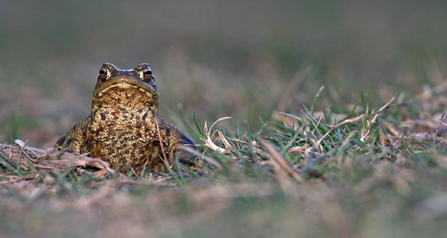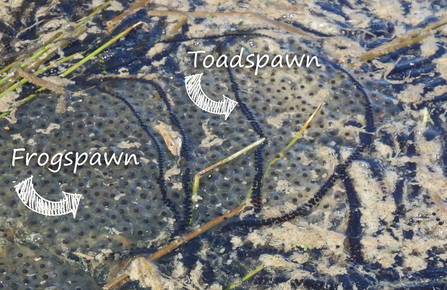Records show that toads and frogs numbers have fallen, with toads declining over 68% since the 1970s. Increased draughts and drier conditions in recent years may have contributed to these changes.
Local wildlife charity calls for spawn sightings
Frogs and spawn by Sarah Fowle

Common toad by Wendy Carter
To gain insight into how these amphibians are doing in Worcestershire, spawn has been identified as a focus for the Trust’s Wildlife Sightings scheme, a project which aims to gather information about population, distribution and breeding for a series of target species across the county.
Frogs and toads begin laying spawn in late winter to early spring. However, the exact timing of the amphibians migrating to breeding grounds can be influenced by factors such as temperature and day length.
Engagement team leader at the Trust, Nick Packham, commented “With milder winter weather becoming more common, we want to see whether our changing climate has affected the spawn laying of frogs and toads in Worcestershire. By people recording their sightings, we can keep an eye on this breeding behaviour.
“Most toads and frogs have now moved back to their breeding ponds in the recent mild and wet weather so we’re keen to hear from people who are seeing spawn appear in their garden ponds and whilst they’re out in local green spaces.
“We’re calling on anyone who is out for a walk or tending to their garden to keep an eye out for spawn in shallow patches of water or ponds. Frogspawn is typically in large clumps, whilst toadspawn is laid in long lines.”

Frogspawn and toadspawn by Wendy Carter
Individuals are being asked to record frog and toadspawn by uploading photos to Worcestershire Wildlife Trust’s wildlife sightings page, where further information about target species and the scheme is available.
